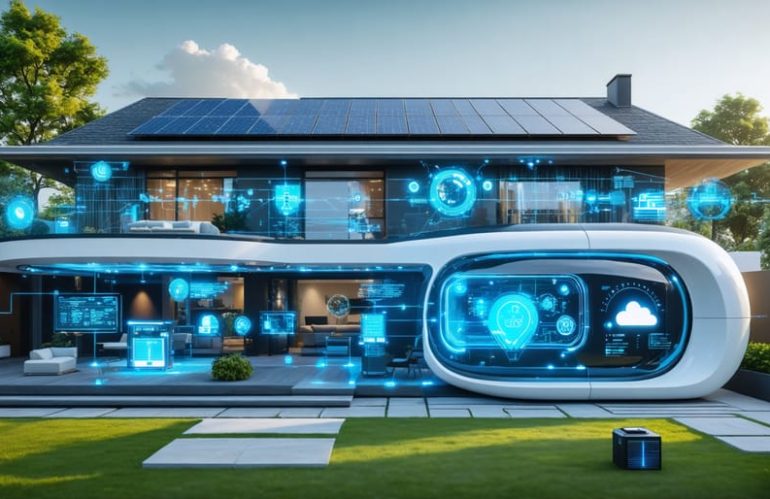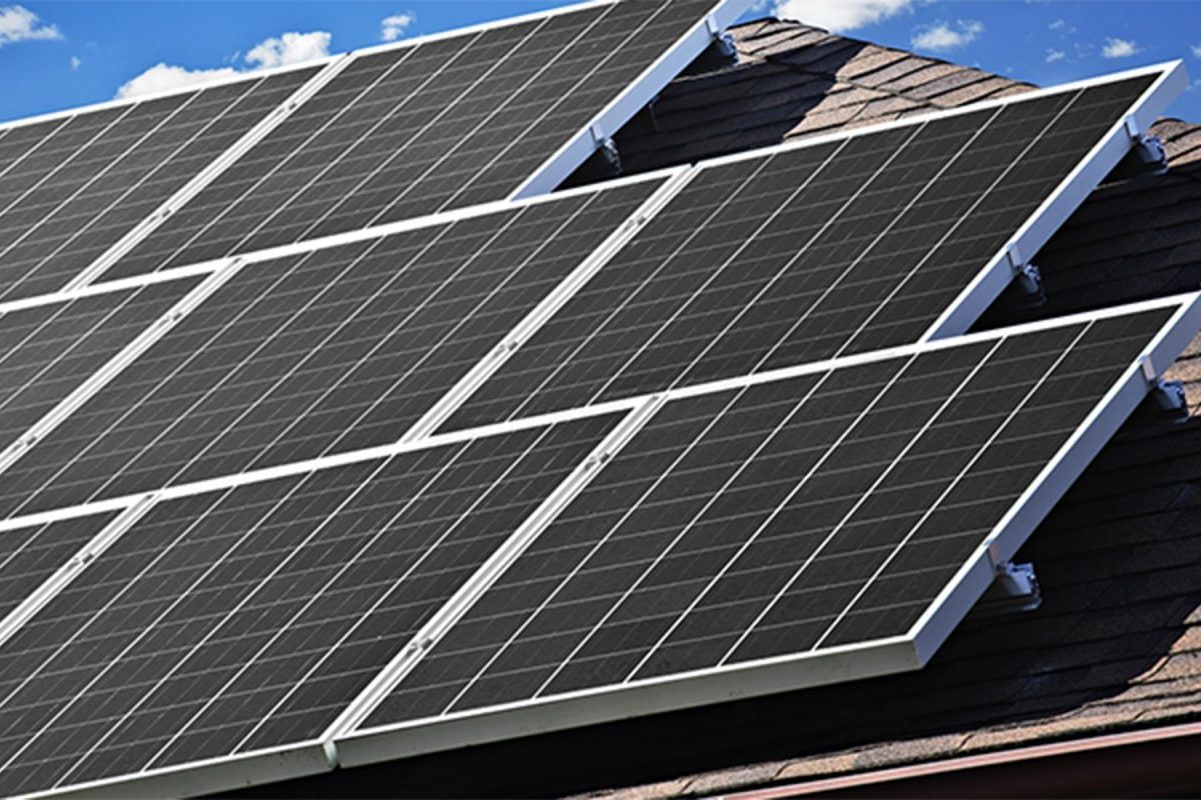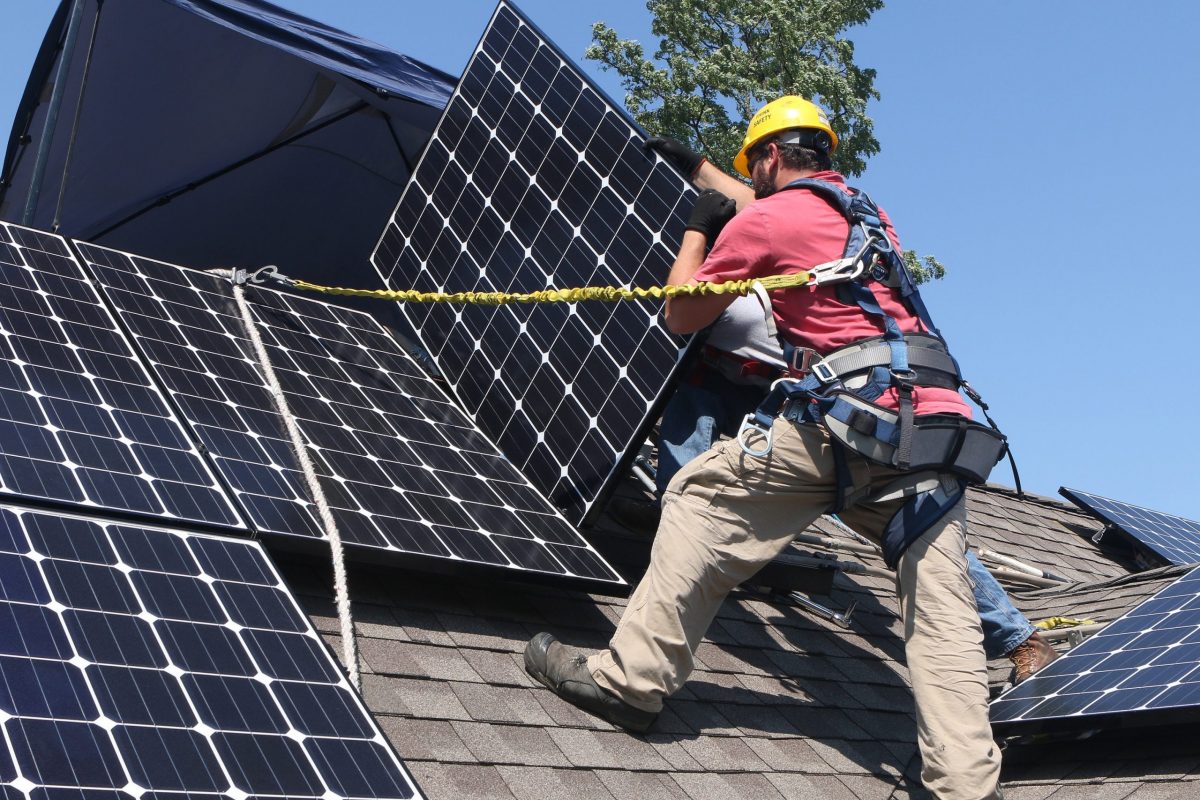The future of solar power storage is transforming how we harness and use clean energy at home. Revolutionary battery technologies, from solid-state cells to flow batteries, are making solar storage more efficient and affordable than ever before. Beyond traditional lithium-ion systems, innovative solutions like thermal storage and hydrogen fuel cells are emerging as game-changers for homeowners seeking energy independence.
Today’s smart storage systems don’t just store power—they learn your energy usage patterns, predict weather impacts, and automatically optimize power distribution throughout your home. These intelligent systems can reduce electricity bills by up to 40% while providing reliable backup power during outages. By combining cutting-edge hardware with sophisticated energy management software, modern storage solutions are making the dream of 24/7 solar power a reality.
As battery costs continue to fall and efficiency improves, homeowners now have more options than ever to customize their energy storage setup. Whether you’re looking to go completely off-grid or simply want to maximize your solar investment, today’s innovative storage solutions offer the flexibility and performance to meet your specific needs while future-proofing your home’s energy system.
Smart Battery Systems: The Game-Changer in Home Solar
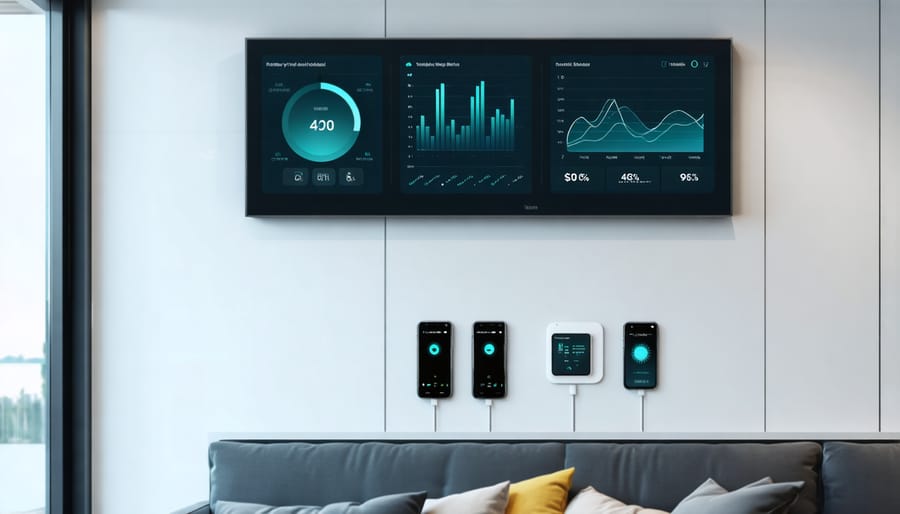
AI-Powered Storage Management
Artificial intelligence is revolutionizing how we store and manage solar energy, making smart storage solutions more efficient than ever before. Modern battery systems now incorporate AI algorithms that learn your household’s unique energy consumption patterns, automatically optimizing charging and discharge cycles to maximize savings and efficiency.
These intelligent systems analyze various factors, including weather forecasts, historical usage data, and real-time electricity rates, to make informed decisions about when to store and when to use power. For example, if the AI predicts cloudy weather tomorrow, it might prioritize storing more energy today while the sun is shining.
The AI also helps extend battery life by preventing overcharging and maintaining optimal temperature levels. It can detect potential issues before they become problems, alerting homeowners to necessary maintenance and ensuring the system operates at peak performance.
For homeowners, this means greater energy independence and reduced utility bills without the need to manually manage their storage system. The AI handles complex decisions automatically, such as choosing whether to store excess solar power or sell it back to the grid based on current market rates and your household’s anticipated needs.
As these systems continue to evolve, they’re becoming increasingly sophisticated at predicting and adapting to changing energy needs, making solar storage more practical and cost-effective for the average homeowner.
Weather-Adaptive Storage Solutions
Weather-adaptive storage systems represent a groundbreaking advancement in energy management, combining smart technology with weather forecasting to optimize your home’s energy storage and usage. These intelligent systems continuously monitor local weather patterns and adjust their charging and discharging cycles accordingly.
On sunny days, these systems prioritize storing excess energy for upcoming cloudy periods. When storm clouds are forecast, they automatically increase storage capacity to ensure your home has sufficient backup power. This predictive approach helps maintain consistent energy supply regardless of weather conditions.
The technology also learns from your household’s usage patterns. For instance, if your family typically uses more electricity during evening hours, the system will ensure maximum storage capacity during daytime charging periods. During extended periods of predicted poor weather, it can automatically implement conservation modes to stretch stored energy further.
Many weather-adaptive solutions now integrate with smart home systems, allowing you to monitor and adjust settings through user-friendly mobile apps. Some advanced systems even factor in electricity rates, storing more energy when prices are low and using stored power during peak-rate periods.
These adaptive solutions typically reduce energy waste by 20-30% compared to traditional storage systems, translating to significant savings on utility bills while ensuring your home remains powered through varying weather conditions. The initial investment is often offset by these efficiency gains within a few years of installation.
Hybrid Storage Solutions
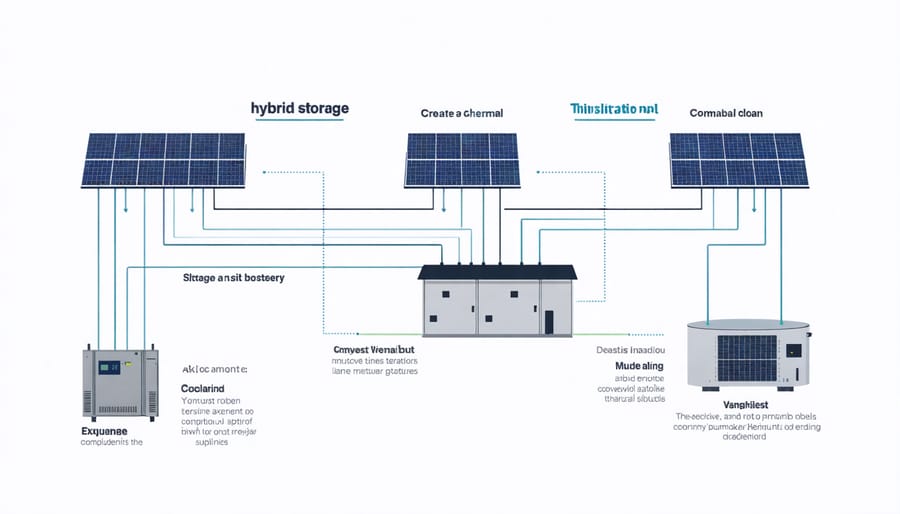
Battery + Thermal Storage
Combining battery and thermal storage creates a powerful synergy that maximizes your home’s energy efficiency. While batteries store electrical energy for later use, thermal storage systems capture excess heat energy that would otherwise go to waste. This dual approach provides a more complete energy solution for your home.
Think of it like having both a checking and savings account for your energy. Battery storage handles your day-to-day electrical needs, powering appliances and electronics when the sun isn’t shining. Meanwhile, thermal storage acts as your long-term energy savings, storing heat that can be used for water heating and space heating during cooler periods.
The real magic happens in how these systems complement each other. During peak solar production, your batteries can store electricity while thermal systems capture excess heat. This means you’re utilizing more of the sun’s energy that hits your roof. In winter months, the thermal storage reduces the electrical load on your batteries by handling heating needs, extending their effective capacity.
This combined approach typically results in 20-30% better overall energy efficiency compared to using either system alone, leading to greater energy independence and lower utility bills.
Virtual Power Plant Integration
Virtual Power Plants (VPPs) represent one of the most exciting game-changing solar technologies transforming how we store and share energy. By connecting your home’s battery storage system to a community network, you become part of a larger, more efficient power ecosystem.
Think of a VPP as a neighborhood energy sharing program. When your batteries are full, excess power can be shared with nearby homes or sent back to the grid. During peak demand, you can earn credits by allowing the network to draw small amounts of power from your storage system. This collaborative approach helps stabilize the local power grid and can significantly reduce your energy costs.
Getting started with VPP integration is surprisingly straightforward. Many modern home battery systems come VPP-ready, requiring only a simple software update to connect. Popular brands like Tesla Powerwall and Enphase already offer VPP capabilities, making it easy to join existing networks.
The benefits extend beyond individual savings. VPP participants help reduce the strain on power plants during peak hours, leading to fewer blackouts and a more reliable grid for everyone. As more homeowners join these networks, the entire community benefits from cleaner, more affordable energy.
Cost-Effective Storage Options
Modular Storage Systems
Modern modular storage systems represent a revolutionary approach to home organization, offering unprecedented flexibility and scalability. These innovative solutions feature interchangeable components that can be easily added, removed, or reconfigured as your storage needs evolve. Whether you’re dealing with a growing family, changing lifestyle, or simply want to maximize your available space, modular systems adapt seamlessly to your requirements.
The beauty of modular storage lies in its versatility. Start with basic units and expand gradually by adding complementary pieces like drawers, shelves, or specialized compartments. This building-block approach allows you to create custom storage solutions without committing to permanent installations or costly renovations. Many systems feature tool-free assembly, making modifications quick and hassle-free.
Today’s modular storage options come in various materials and finishes, from sustainable bamboo to recyclable plastics and powder-coated steel. Manufacturers are increasingly focusing on eco-friendly materials and production methods, ensuring your storage solution aligns with environmental consciousness. Smart design features like adjustable shelving, removable dividers, and stackable containers maximize space efficiency while maintaining aesthetic appeal.
For small spaces, vertical modular systems can transform unused wall areas into valuable storage real estate. Some systems even integrate with smart home technology, featuring built-in lighting or inventory tracking capabilities. The initial investment in quality modular storage often proves more economical than traditional fixed solutions, as the system grows with you rather than requiring complete replacement when needs change.
Refurbished Battery Options
Refurbished battery storage solutions offer an eco-friendly and cost-effective alternative to new systems without compromising on performance. These pre-owned units undergo rigorous testing and certification processes, ensuring they meet strict quality and safety standards before reaching consumers.
Certified refurbished batteries typically retain 80-90% of their original capacity and come with warranties ranging from 5-10 years. They’re sourced from various channels, including upgraded commercial installations and lightly used residential systems, then professionally reconditioned by certified technicians.
The cost savings are substantial, with refurbished options often priced 30-50% lower than new units. This makes energy storage more accessible to homeowners while reducing electronic waste. Many manufacturers now offer certified pre-owned programs with comprehensive testing protocols and detailed performance histories for each unit.
When considering refurbished batteries, look for:
– Third-party certification
– Detailed capacity testing results
– Clear warranty terms
– Installation support
– Performance guarantees
Leading brands have established quality assurance programs specifically for refurbished units, providing peace of mind for consumers. These programs include thorough diagnostic testing, component replacement where necessary, and full system optimization before resale.
Choosing refurbished storage solutions supports the circular economy while making sustainable energy more affordable for homeowners.
Future-Proof Storage Technologies
Solid-State Batteries
Solid-state batteries represent a groundbreaking leap forward in home energy storage technology. Unlike traditional lithium-ion batteries, these innovative power cells use solid electrolytes instead of liquid ones, making them safer, more efficient, and longer-lasting for homeowners.
One of the most exciting benefits of solid-state batteries is their improved energy density – they can store up to three times more energy than conventional batteries in the same space. This means you can store more solar power without taking up additional room in your home. They also charge faster, potentially reducing the time needed to store excess solar energy during peak production hours.
Safety is another major advantage. With no liquid components, solid-state batteries eliminate the risk of leakage and are far less susceptible to fires or thermal runaway events. This makes them an ideal choice for indoor installation, giving homeowners greater flexibility in placement options.
While currently in the early stages of commercialization, solid-state batteries are expected to become more widely available for home energy storage within the next few years. Early adopters can expect higher upfront costs, but the extended lifespan (potentially 15-20 years) and improved performance make them a compelling long-term investment.
The technology also performs better in extreme temperatures, maintaining consistent performance whether it’s the height of summer or the depths of winter. This reliability ensures your home’s energy storage system works effectively year-round, maximizing your solar investment.

Green Hydrogen Integration
Green hydrogen represents an exciting frontier in renewable energy storage, offering a promising complement to traditional battery systems. This innovative technology works by using excess solar energy to split water into hydrogen and oxygen through electrolysis. The hydrogen can then be stored and later converted back into electricity when needed, creating a sustainable energy cycle.
For homeowners, green hydrogen storage offers several unique advantages. Unlike batteries, hydrogen can store energy for extended periods without degradation, making it particularly valuable for seasonal energy storage. This means excess summer solar production could potentially power your home during darker winter months.
The integration of hydrogen storage with existing solar setups is becoming increasingly practical. Modern systems can be designed to automatically switch between battery and hydrogen storage based on your energy needs and production levels. When batteries are fully charged, surplus energy can be directed to hydrogen production instead of being wasted.
While currently more common in commercial applications, residential hydrogen storage solutions are evolving rapidly. Compact storage systems are being developed specifically for home use, with improved safety features and simplified maintenance requirements. These systems can work alongside traditional batteries, creating a robust and flexible energy storage solution.
Looking ahead, experts predict that as technology advances and costs decrease, green hydrogen will become an increasingly viable option for residential energy storage, offering homeowners another powerful tool in their journey toward energy independence.
As we’ve explored throughout this article, innovative storage solutions are revolutionizing how we harness and utilize solar energy. From advanced lithium-ion batteries to emerging technologies like flow batteries and thermal storage systems, homeowners now have more options than ever to maximize their solar investment.
The key to success lies in choosing the right storage solution for your specific needs. Consider factors such as your daily energy consumption patterns, local climate conditions, and available space when making your decision. Remember that while initial costs may seem substantial, the long-term benefits of energy independence and reduced utility bills make these investments increasingly worthwhile.
To get started on your storage solution journey, we recommend:
1. Conducting an energy audit to understand your household’s consumption patterns
2. Consulting with certified solar installers to evaluate your home’s specific requirements
3. Researching available incentives and tax credits in your area
4. Comparing different storage technologies based on efficiency, lifespan, and maintenance needs
5. Creating a realistic budget that accounts for both immediate and long-term costs
As storage technology continues to advance and become more affordable, there’s never been a better time to invest in these sustainable solutions. By taking action today, you’re not only securing your energy future but also contributing to a cleaner, more sustainable planet for generations to come.

